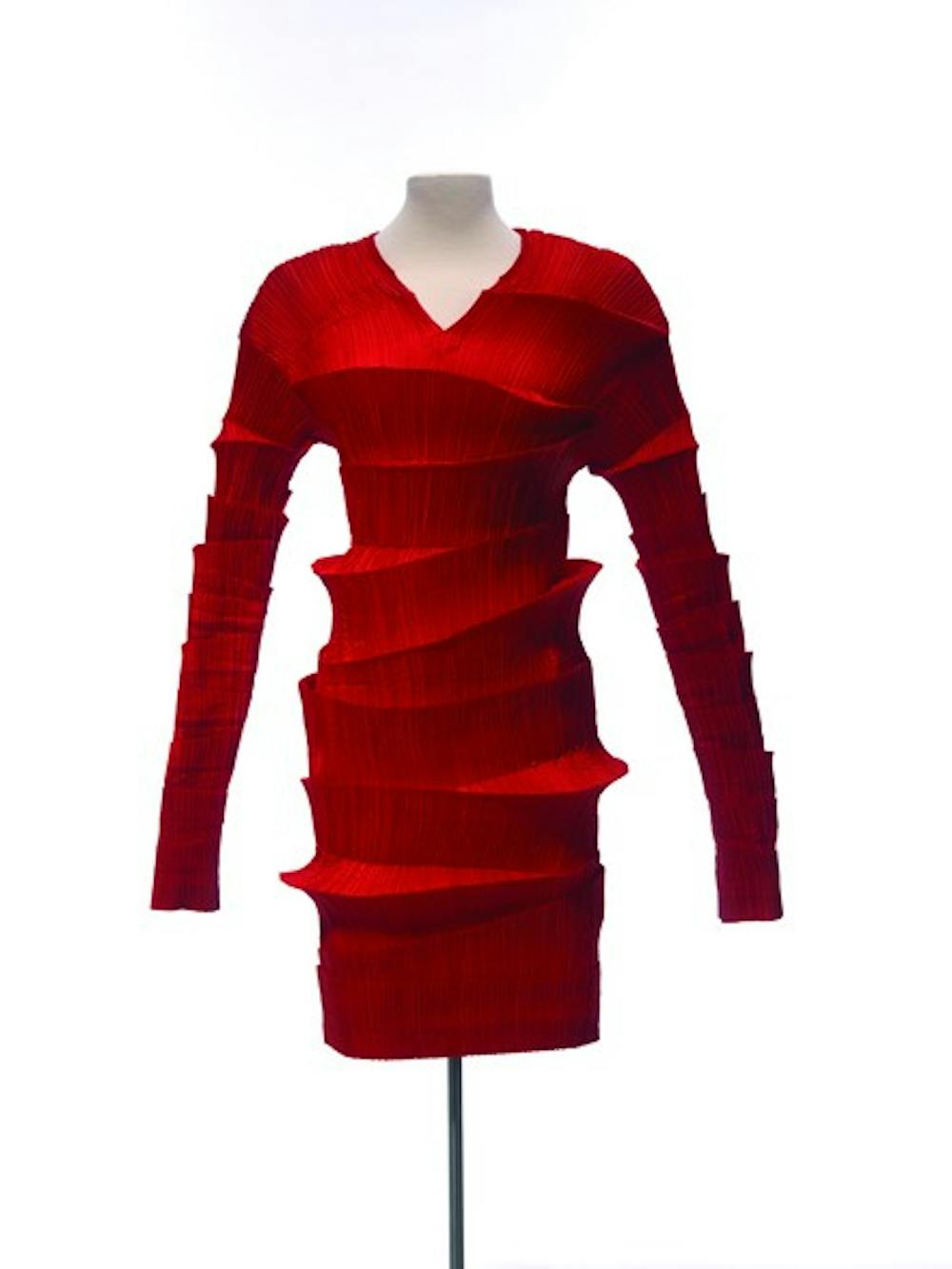The Textile Museum’s newest exhibit, “Contemporary Japanese Fashion: The Mary Baskett Collection,” opened last week, accompanied by a complementing exhibit, “Fabrics of Feathers and Steel: The Innovation of Nuno.”
The guest curator of “The Mary Baskett Collection” is Cynthia Amneus, the curator of costumes and textiles at the Cincinnati Art Museum. Baskett is an art dealer and former curator at the same museum. All of the pieces in the exhibit come from Baskett’s personal closet. She started collecting pieces in the early ‘70s and has her own gallery in Ohio.
The exhibit mainly features three Japanese designers: Rei Kawakubo, Issey Miyake and Yohji Yamamoto. There are also a few pieces from protégés, those influenced by the main three designers and those who have worked with them.
Kawakubo, Miyake and Yamamoto all became very influential in the fashion world after their work was first introduced in Paris in the early ‘80s. Their clothing is characterized by unconventional construction, asymmetry and oversized proportions. They broke the mold for Western fashion at the time and are credited for their contributions in influencing the post-modernist movement in fashion.
As you walk through the hallway towards the exhibit, it is clear that everything has been planned with the viewer in mind. Black silhouette figures line the walls, rotating as you move further down the hallway.
“I see the hallway as a transition space,” Amneus said. “I wanted a different kind of experience as you move into the galleries.”
There are three galleries in the exhibit, each devoted to one of the three designers. Each ensemble is hung from cables on top of asymmetrical white platforms. Most of the pieces do not have mannequins in an attempt to keep the viewer focused on the clothing. Amneus wanted the ensembles to be seen as artwork.
“I did not want to show these pieces on typical mannequins,” Amneus said. “You see them on a body form but not on full mannequins. I wanted the visitor to be focused on the piece itself.”
She also said the abstract platforms are designed to give the viewer an idea of the avant garde aspect of the pieces and to hint at a sense of disarray.
All three of the designers share a similar unconventional aspect, but each has their own twist on their designs.
Yamamoto is well known for the subtle characteristics of his pieces. Many of his ensembles cause the viewer to do a double take to spot the twist. His pieces include an off-white suit with an asymmetrical hemline and a black dress without shoulder seams that contests conventional cutting.
Miyake’s philosophy that each individual should be able to wear the same piece differently is apparent in his work. Miyake was interested in pushing the limits of textile technology and began pleating polyester in the ‘90s, allowing for a lot of flexibility in movement for the wearer.
Kawakubo is interested in the idea that art can be beautiful and simultaneously displeasing to the eye. One of her pieces is a dress of a dainty pink fabric that looks like a sack when worn.
The complementary “Nuno” exhibit also proved interesting. “Nuno” is Japanese for “functional fabric,” and, fittingly, the exhibit features 18 of the world’s most innovative fabrics.
“The 18 that we have chosen give an idea of the technical range, wit and beauty of fabric today,” said associate curator Lee Talbot. “These technologies are what have allowed the designers [like those featured in “The Mary Baskett Collection”] to make such creative pieces.”
Both exhibitions will be open to the public through April 11, 2010.
You can reach this writer at thescene@theeagleonline.com.





